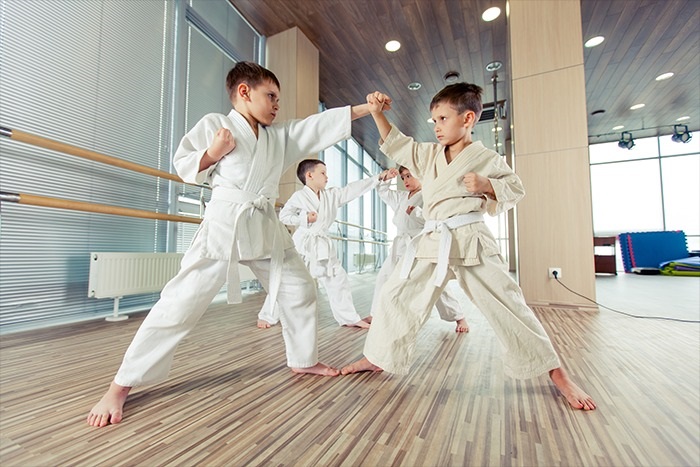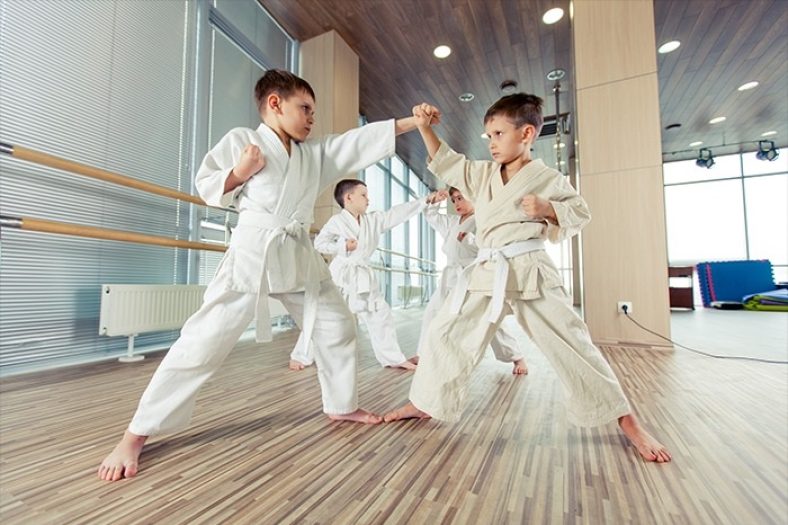Regularly engaging in sports activities supports good height development. However, the effectiveness of height increase varies across different sports disciplines. Many have been concerned about the impact of martial arts training on height. So, does learning martial arts help in increasing height, and how should one practice martial arts to improve height while promoting overall health? The following article from ‘Grow Taller Solutions’ will address these inquiries.
Does Learning Martial Arts Aid Height Increase?
Martial arts are a form of sports that enhance fitness and self-defense abilities in various situations. Nonetheless, some sources suggest that children should not practice martial arts as it might hinder height development, raising concerns among parents who enroll their children in martial arts classes.
In reality, children practicing martial arts frequently perform swift and vigorous movements, enduring high-intensity impacts, prompting their bodies to adapt accordingly. Specifically, bones tend to thicken to withstand pressure, prioritizing width over length in their growth. For children involved in martial arts, their bone membranes extensively use calcium to fortify the exterior of the bones. Consequently, calcium at the ends of the cartilage becomes deficient, leading to stunted height growth.
Therefore, the notion that martial arts might stunt growth is valid, particularly among children in the rapid bone development stages such as prepubescence and adolescence, without a proper, scientifically oriented training regimen.

At What Age Should One Start Learning Martial Arts to Increase Height?
Learning martial arts is not the optimal choice for height enhancement. However, if a child desires to learn martial arts for self-defense, parents should facilitate proper training conditions without adversely affecting height development.
Children should not practice martial arts at a very young age when they are unable to understand and perform techniques correctly, increasing the risk of injuries significantly. Moreover, their bones are fragile and soft, and even mild force can cause severe damage.
Children can begin learning martial arts around the age of 6, coinciding with the time they start first grade. At this age, they can comprehend and execute basic martial arts exercises. Parents should enroll their children in reputable training centers with professional trainers who follow suitable curriculums beneficial for health without hindering height development.
If the goal is rapid height improvement, rather than martial arts, parents should encourage their children to engage in sports more beneficial for height, such as swimming, badminton, volleyball, basketball, jump rope, single bar exercises, yoga, coupled with a balanced diet, sufficient sleep, and proper nutrition.
Choosing Martial Arts for Height Growth
Taekwondo
Can learning martial arts contribute to height growth in children and adolescents? Among the various martial arts disciplines, Taekwondo stands out for its potential in supporting bone development. Many movements in Taekwondo serve as stretching exercises that can elongate bones when practiced at home. This martial art form is suitable for youngsters in their developmental stages.
Vovinam
Vovinam incorporates techniques from various martial arts worldwide. Its uniqueness lies in its blend of flexibility and strength. Practitioners learn basic maneuvers and eventually progress to sequences and weaponry after mastering fundamental techniques.
Engaging in Vovinam involves bare-handed exercises, counterattacks, self-defense, acrobatics, and jumping. This continuous activation of bones and joints with force stimulates natural growth. It’s essential for children to maintain a balanced intensity level in their training, progressing from basics to advanced stages to adapt and achieve optimal performance.
Karatedo
Originating from Japan, Karatedo is renowned for its kicks, punches, the use of fists, knees, open-handed strikes, joint locks, continuous kicking, and throws. Practitioners frequently rotate their hips, requiring concentrated energy for executing these techniques. Additionally, the hip bones and spinal column strengthen to provide optimal body support.
Judo
Judo, originating in Japan, amalgamates techniques from various martial arts. Notable for its defensive moves like throws, chokes, holds, and joint locks, practitioners engage sudden powerful forces that stimulate bone growth, aiding in height improvement.
Wushu
This modern Chinese martial art is popular among Vietnamese children and adolescents for physical conditioning and height enhancement. Wushu movements stretch the legs and arms, promoting bone elongation and height gain. Persistence in following proper techniques is crucial to avoid muscle strains during practice.
Considerations for Martial Arts Training to Enhance Height
Martial arts training as a specialized form of exercise impacting height growth depends on the implementation approach. Therefore, adhering to specific guidelines and considerations while training is pivotal to achieve desired height results:
👉 Warm-up adequately before training and stretch post-exercise.
👉 Pay attention to correct technique execution to prevent injuries to muscles, bones, and joints.
👉 Follow instructions provided by trainers.
👉 Match training intensity to individual physical conditions, progressing from basic to advanced levels.
👉 Hydrate adequately before and after martial arts training for sustained energy and swift recovery.
👉 Maintain a balanced, nutritious diet to support physical activity, consuming light meals about 45-60 minutes before martial arts sessions.
Hopefully, these insights provide a comprehensive and accurate view regarding whether martial arts aid in height increase. While martial arts offer numerous health benefits, they may not be the optimal choice for height gain. Hence, parents should encourage their children to engage in martial arts sensibly, avoiding excessive strain or frequent heavy impact on bones that may hinder height growth, potentially limiting future opportunities.
- See More: Grow Taller Solutions
